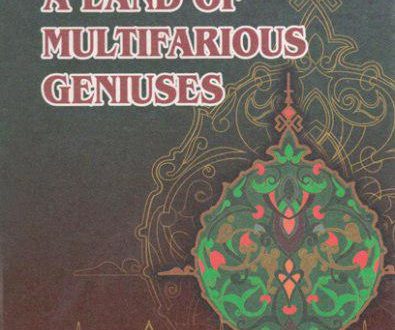The time of life and creative activities of His Eminency Kama-liddin Behzad corresponds to the last fifty years of the Temurid princes’ reign (1370-1506) in Central Asia, Muhammad Shaybani Khan’s reign (1506) in Maveraunnahr and Khorasan, the reign of the representative of the Safavid dynasty ^Shah Ismail in Azerbaijan and Iran, Zahiriddin Muhammad Babur’s reign in Kabul (1505) and erection of the great empire in India (1526). Though the capital city of the empire built by Amir Temur was later occupied by the successors of other dynasties, the ideology of the time — Islam and one of its component parts Sufism used to reflect the spiritual life of the society.
During the 35 years of time of his reign, Amir Temur turned Samarkand, the main pier of the state, into one of the most beautiful and marvellous cities of the world and political, social and cultural centres of his empire. The surrounding villages of the capital were given the names of famous cities of the world such as Paris, Baghdad and Damascus. The highly qualified and most skilful masters and craftsmen of art and culture, scholars and the learned people, poets and painters, architects and builders were mobilized into such cities as Samarkand, Shakhrisabz, Tashkent, Turkistan, etc. to erect new constructions. In accord with their abilities and possibilities, all the owners of high positions in the royal court were called to erect new constructions, memorial buildings, bridges and gardens. As a result of this attempt, Samarkand and Herat turned into the most beautiful and magnificent cities and cultural centres of the world. The creative spirit of this time and the leading ideas in the creation of marvellous buildings and memorial complexes reflected the motto put forward by Amir Temur in the fazade of his Aksarai palace in Shahrisabz “If you suspect of our power, look at the buildings we have erected”.
In the 14th century, people from all the countries of the Islamic world used to come to Samarkand to study the theories and teachings of the Kubraviya, Yassaviya and Naqshbandiya orders.
The political and cultural life of Samarkand of the 15th century was reflected in the structure of Behzad’s miniatures used in “Zafarname” by Sharafiddin Ali Yazdi. The first half of the 15th century may be called the brightest pages of the history of culture during the reign of the Temurid princes. Under the auspices of Mirza Ulugbek different branches of science and education began to develop in Samarkand. Under his leadership a special laboratory, i.e. an observatory was erected to study the movements of stars. Because of this effort, Samarkand was turned into an astronomical centre and Mirza Ulugbek made a complex table of movements of the 1018 stars called “Ziji Jadidi Kuragani”. The interior of the astronomic observatory was decorated with the signs of star movements. Mirza Ulugbek personally took part in the process of compilation of the book “Tarikh arba’i ulusi Chinghizi”. At that time, Samarkand grew into a highly developed centre of science and education. The learned people of that time considered necessary and obligatory to receive education in this city. Perhaps therefore, a young and diligent student Abdurrahman Jami came from Herat to Samarkand to study.
At the beginning of the 15th century, especially during the reign of the Temurid prince Shahrukh Mirza (1405-1447), due to the personal efforts of the prince Mirza Baysunghur, Herat, the capital city of Khorasan, became the centre of scholars, artists, calligraphists, painters, musicians and poets. According to “Arzadosht” (“Arz-name”) compiled at that time, there were more than 40 creative workers at the royal library who worked in the field of source study. They repaired and recompiled the old texts of valuable manuscripts such as “Shahname” by Firdavsi, the lyrical collection of poems of Amir Khusrav, historical works of Sharafiddin Ali Yazdi, Hafizi Abru, “Hamsa” by Nizami Ganjavi, “Kalila and Dimna”, “Me’rajname”, etc. and decorated them with beautiful and original miniatures.
Thanks to the support rendered by Alisher Navai to the craftsmen and representatives of art and science during the reign of the Temurid princes, culture and art reached their zenith of development. Kamaliddin Behzad’s name shone brightly in the list of scholars and scribes of that time like Sultan Ali Mashhadi, Sultan Ali Kashini, Mir Ali Kheravi, painters like Mirak Naqqash and Khoja Muhammad Qasim Ali.
At the beginning of the 16th century although the Shaybanids reigned in Maveraunnahr, the Safavids ruled in Iran and the Baburid princes reigned in India, they all tried to re-establish the culture of the time of Temurids and develop the traditions of that period. Thus, with their highest level in different branches and highly qualified representatives the culture and art of the 14th-15th centuries played an important role in the world culture and served as a foundation for its further development. Therefore, the creative works of the Temurid poets, artists, scholars and scribes were highly appreciated and respected in newly born capital cities like Bukhara, Tabriz and Delhi.
 Imom Buxoriy xalqaro ilmiy-tadqiqot markazi bukhari.uz
Imom Buxoriy xalqaro ilmiy-tadqiqot markazi bukhari.uz











